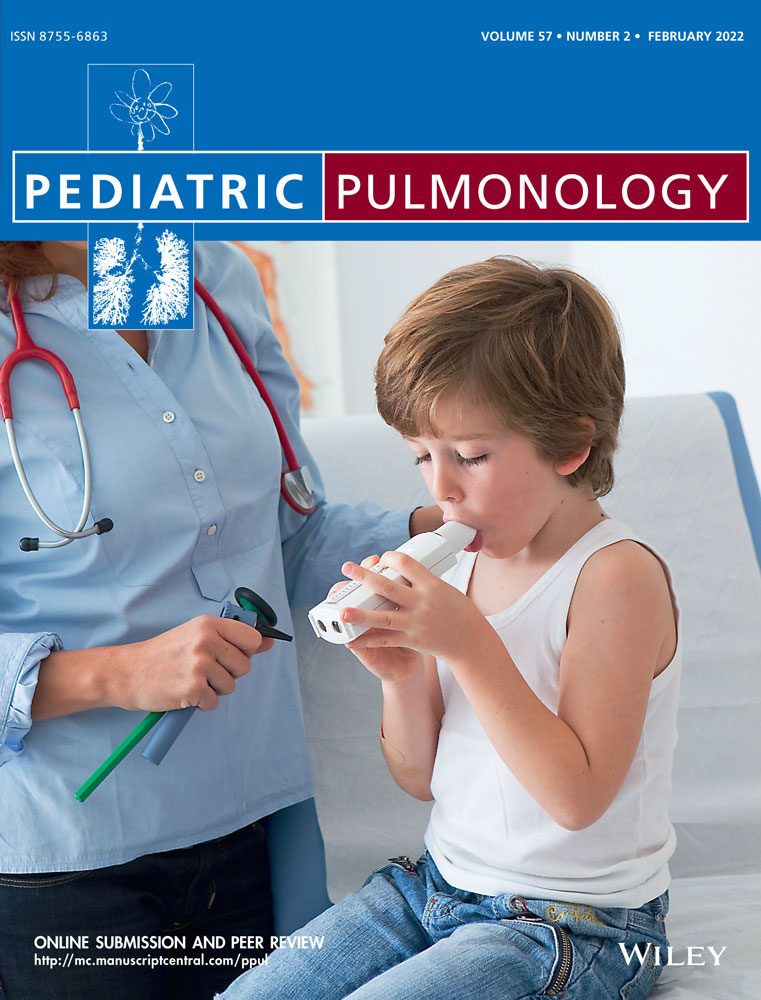One size does not fit all—Why do pediatric spirometry estimates vary across populations “down under”?
Rebeca Mozun MD, PhD
Institute of Social and Preventive Medicine, University of Bern, Bern, Switzerland
Contribution: Conceptualization (lead), Writing - original draft (lead), Writing - review & editing (supporting)
Search for more papers by this authorFlorian Berger MD
Division of Pediatric Cardiology, Pediatric Heart Center, University Children's Hospital Zurich, Zurich, Switzerland
Children's Research Center, University Children's Hospital, Zurich, Switzerland
Contribution: Conceptualization (supporting), Writing - review & editing (supporting)
Search for more papers by this authorCorresponding Author
Florian Singer MD, PhD
Division of Paediatric Respiratory Medicine and Allergology, Department of Paediatrics, Inselspital, Bern University Hospital, University of Bern, Bern, Switzerland
Department of Paediatrics, PEDNET, Paediatric Clinical Trial Unit, Inselspital, Bern University Hospital, University of Bern, Bern, Switzerland
Correspondence Florian Singer, MD, PhD, Inselspital, Bern University Hospital, University of Bern, Freiburgstrasse 15, 3010 Bern, Switzerland.
Email: [email protected]
Contribution: Conceptualization (lead), Writing - review & editing (lead)
Search for more papers by this authorRebeca Mozun MD, PhD
Institute of Social and Preventive Medicine, University of Bern, Bern, Switzerland
Contribution: Conceptualization (lead), Writing - original draft (lead), Writing - review & editing (supporting)
Search for more papers by this authorFlorian Berger MD
Division of Pediatric Cardiology, Pediatric Heart Center, University Children's Hospital Zurich, Zurich, Switzerland
Children's Research Center, University Children's Hospital, Zurich, Switzerland
Contribution: Conceptualization (supporting), Writing - review & editing (supporting)
Search for more papers by this authorCorresponding Author
Florian Singer MD, PhD
Division of Paediatric Respiratory Medicine and Allergology, Department of Paediatrics, Inselspital, Bern University Hospital, University of Bern, Bern, Switzerland
Department of Paediatrics, PEDNET, Paediatric Clinical Trial Unit, Inselspital, Bern University Hospital, University of Bern, Bern, Switzerland
Correspondence Florian Singer, MD, PhD, Inselspital, Bern University Hospital, University of Bern, Freiburgstrasse 15, 3010 Bern, Switzerland.
Email: [email protected]
Contribution: Conceptualization (lead), Writing - review & editing (lead)
Search for more papers by this authorCONFLICT OF INTERESTS
Florian Singer received honoraria for lectures from Vertex Switzerland and Novartis Switzerland. Other authors declare no conflict of interests.
REFERENCES
- 1Quanjer PH, Stanojevic S, Cole TJ, et al. Multi-ethnic reference values for spirometry for the 3-95-yr age range: the Global Lung Function 2012 equations. Eur Respir J. 2012; 40(6): 1324-1343.
- 2Strippoli MP, Kuehni CE, Dogaru CM, et al. Etiology of ethnic differences in childhood spirometry. Pediatrics. 2013; 131(6): e1842-e1849.
- 3Whitrow MJ, Harding S. Ethnic differences in adolescent lung function: anthropometric, socioeconomic, and psychosocial factors. Am J Respir Crit Care Med. 2008; 177(11): 1262-1267.
- 4Sonnappa S, Lum S, Kirkby J, et al. Disparities in pulmonary function in healthy children across the Indian urban-rural continuum. Am J Respir Crit Care Med. 2015; 191(1): 79-86.
- 5Quanjer PH, Stanojevic S. Do the Global Lung Function Initiative 2012 equations fit my population? Eur Respir J. 2016; 48(6): 1782-1785.
- 6Collaro AJ, Chang AB, Marchant JM, Chatfield MD, Blake TL, McElrea MS. How do Cormic Index profiles contribute to differences in spirometry values between White and First Nations Australian children? Pediatr Pulmonol. 2021. Advance online publication. https://doi.org/10.1002/ppul.25692
- 7Blake TL, Chang AB, Chatfield MD, Marchant JM, McElrea MS. Global Lung Function Initiative-2012 ‘other/mixed’ spirometry reference equation provides the best overall fit for Australian Aboriginal and/or Torres Strait Islander children and young adults. Respirology. 2020; 25(3): 281-288.
- 8Smith JR, Emerson SR, Kurti SP, Gandhi K, Harms CA. Lung volume and expiratory flow rates from pre- to post-puberty. Eur J Appl Physiol. 2015; 115(8): 1645-1652.
- 9Ogunlana MO, Oyewole OO, Lateef AI, Ayodeji AF. Anthropometric determinants of lung function in apparently healthy individuals. S Afr J Physiother. 2021; 77(1): 1509.
- 10Obaseki DO, Erhabor GE, Awopeju OF, et al. Reduced forced vital capacity in an African population. Prevalence and risk factors. Ann Am Thorac Soc. 2017; 14(5): 714-721.
- 11Heraganahally SS, Howarth T, White E, Sorger L, Biancardi E, Ben Saad H. Lung function parameters among Australian Aboriginal ‘apparently healthy’ adults: an Australian Caucasian and Global Lung Function Initiative (GLI-2012) various ethnic norms comparative study. Expert Rev Respir Med. 2021; 15(6): 833-843.
- 12Quanjer PH, Kubota M, Kobayashi H, et al. Secular changes in relative leg length confound height-based spirometric reference values. Chest. 2015; 147(3): 792-797.
- 13Al-Yaman F. The Australian Burden of Disease Study: impact and causes of illness and death in Aboriginal and Torres Strait Islander people, 2011. Public Health Res Pract. 2017; 27(4):2741732.
- 14Lum S, Bountziouka V, Sonnappa S, Cole TJ, Bonner R, Stocks J. How “healthy” should children be when selecting reference samples for spirometry? Eur Respir J. 2015; 45(6): 1576-1581.
- 15Chinn S, Jarvis D, Svanes C, Burney P. Sources of variation in forced expiratory volume in one second and forced vital capacity. Eur Respir J. 2006; 27(4): 767-773.
- 16Majonga ED, Norrish G, Rehman AM, et al. Racial variation in echocardiographic reference ranges for left chamber dimensions in children and adolescents: a systematic review. Pediatr Cardiol. 2018; 39(5): 859-868.




